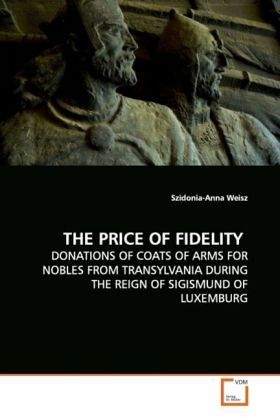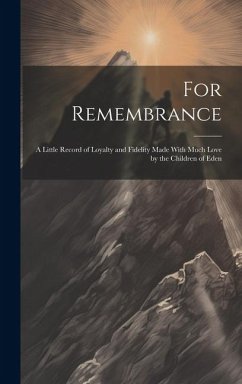
THE PRICE OF FIDELITY
DONATIONS OF COATS OF ARMS FOR NOBLES FROM TRANSYLVANIA DURING THE REIGN OF SIGISMUND OF LUXEMBURG
Versandkostenfrei!
Versandfertig in 6-10 Tagen
32,99 €
inkl. MwSt.

PAYBACK Punkte
16 °P sammeln!
During his reign, King Sigismund of Luxemburg(1387-1437) awarded the loyalty of his followers withdifferent types of privileges; coats of arms wereamong the most popular. Up to this point no approachfrom social history has been applied for this sourcecategory. The aim of this interdisciplinary researchis to study the phenomenon of granting nobles fromTransylvania with grants of arms. On the basis ofvisual and written source material and secondaryliterature, the following questions are discussed:why was this privilege so popular, who could receiveit and why, how do the coats of arms look like, ...
During his reign, King Sigismund of Luxemburg
(1387-1437) awarded the loyalty of his followers with
different types of privileges; coats of arms were
among the most popular. Up to this point no approach
from social history has been applied for this source
category. The aim of this interdisciplinary research
is to study the phenomenon of granting nobles from
Transylvania with grants of arms. On the basis of
visual and written source material and secondary
literature, the following questions are discussed:
why was this privilege so popular, who could receive
it and why, how do the coats of arms look like, and
whether it can be stated that this award could assure
good relations between royalty and nobility. The
first part of the work examines the structure of the
grant of arms, focusing on the elements of royal
propaganda and on what kind of information can be
derived from these documents. The following unit is
dedicated to the grantees, by setting up a
biographical gazetteer. The last chapter gives an
analysis and heraldic description of the studied
coats of arms, and a brief introduction in the
characteristics of the Hungarian heraldry.
(1387-1437) awarded the loyalty of his followers with
different types of privileges; coats of arms were
among the most popular. Up to this point no approach
from social history has been applied for this source
category. The aim of this interdisciplinary research
is to study the phenomenon of granting nobles from
Transylvania with grants of arms. On the basis of
visual and written source material and secondary
literature, the following questions are discussed:
why was this privilege so popular, who could receive
it and why, how do the coats of arms look like, and
whether it can be stated that this award could assure
good relations between royalty and nobility. The
first part of the work examines the structure of the
grant of arms, focusing on the elements of royal
propaganda and on what kind of information can be
derived from these documents. The following unit is
dedicated to the grantees, by setting up a
biographical gazetteer. The last chapter gives an
analysis and heraldic description of the studied
coats of arms, and a brief introduction in the
characteristics of the Hungarian heraldry.












